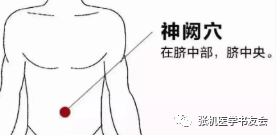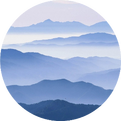The ideal body temperature is between 36-38 degrees Celsius. In particular, 36 degrees can be considered a watershed. If the temperature falls below this, discomfort will follow, accompanying a person throughout their life. If the temperature is above this, there is no need to worry about health, and one will certainly live energetically.
Warming Yang and benefiting Qi, dispelling cold pathogens, primarily involves moxibustion and massage, with Gua Sha as a supplement. Yang deficiency is associated with a cold constitution, primarily characterized by internal cold, meaning the body is internally cool. Generally speaking, internal cold often leads to external cold, where the surface temperature is lower than that of normal individuals, which is referred to as “Yang deficiency leading to external cold.” In such cases, moxibustion is most suitable for supplementing heat to the body. Secondly, massage can generate heat through friction and kneading of the skin.
For individuals with Yang deficiency to achieve the best results from moxibustion, it is recommended to perform it during the three hottest days of summer or the three coldest days of winter, or on the last day of each lunar month, using moxa sticks on acupoints such as Guanyuan (CV4), Shenshu (BL23), and Mingmen (GV4), until the skin becomes red and warm, but still within a tolerable limit. Those with Yang deficiency should use Gua Sha to enhance kidney Yang, paying close attention to the scraping technique and the selected areas. First, use a reinforcing scraping technique, suitable for light pressure and quick scraping. Since Yang Qi is insufficient, the focus should be on supplementation. Do not scrape too many areas at once, and do not spend too long on a single area, as overly dilating the pores can lead to the loss of Yang Qi, thus failing to achieve the desired benefits. Individuals with Yang deficiency are suitable for short-duration scraping over clothing, just enough to make the local area slightly warm, or directly on the skin.
Scraping should be done to the point of warmth without producing bruises, and if certain areas experience pain due to insufficient Yang Qi leading to stagnation of Qi and blood in the meridians, only a small amount of bruising should be produced during each scraping session. There is no need to pursue complete clearance of bruises in one go, as this would deplete Yang Qi. Scraping should be done gradually over multiple sessions to allow the stagnated meridians to gradually clear. For those with both cold deficiency and blood stasis, a reinforcing scraping technique is recommended, focusing on the Zhongwan (CV12), Ge Shu (BL17), and Baihui (GV20) acupoints.
If Yang deficiency leads not only to sensitivity to cold but also to pain, it indicates blood stasis and blocked meridians, as “where there is blockage, there is pain; where there is flow, there is no pain.” At this point, Gua Sha should be used to invigorate blood and resolve stasis. First, scrape the painful areas, following the meridians associated with the pain. Additionally, if Yang deficiency is accompanied by blood stasis, Gua Sha can be performed on the Zhongwan (CV12), Ge Shu (BL17), and Baihui (GV20) acupoints. Sciatica is a symptom of the body expelling cold. Sciatica is one of the symptoms when the body is expelling cold. When the lungs expel cold, it can obstruct the function of the gallbladder, and when the obstruction is severe, it leads to pain in the gallbladder meridian, which is sciatica. The pain is caused by heat in the lungs.
Therefore, massaging the lung meridian can relieve lung heat; once the lung heat is eliminated, the gallbladder meridian will no longer hurt. The lung meridian is a very important meridian in the body, starting from the stomach, connecting down to the large intestine, then returning along the upper stomach, passing through the diaphragm, and belonging to the lungs. It exits from the lung system (trachea, throat area) under the armpit, descending along the inner side of the arm, preceding the hand Shaoyin and hand Jueyin meridians, along the inner side of the arm’s radius (towards the thumb), entering the wrist (where the radial artery pulse is felt, i.e., the pulse-taking point in TCM), descending to the thenar area, and exiting at the tip of the thumb. We can often tap the lung meridian, which is very helpful for expelling cold from the body.
Additionally, when sciatica occurs, massaging the Shizhu (LU5) acupoint on the lung meridian can provide immediate pain relief when the correct acupoint is pressed for one minute. To reduce the likelihood of occurrence, it is advisable to regularly massage the Shizhu acupoint. Before bed each day, use a warm towel or a cloth bag filled with warm salt to apply heat to the lower back or buttocks, ensuring the temperature is comfortable and not too high.
If pain occurs during seasonal changes, due to the liver’s rising energy in spring or the heart’s excessive fire in summer, it can cause symptoms of lung heat due to the imbalance of the organs. Therefore, during health maintenance in spring, it is necessary to first eliminate liver heat, and in summer, to first eliminate heart fire before addressing liver heat. If pain persists, then massage the lung meridian to eliminate lung heat. In autumn, directly massaging the lung meridian can often relieve pain. In winter, liver Qi may rise due to a decrease in kidney Qi, so it is essential to first massage the kidney meridian, followed by the Shizhu acupoint and the lung meridian.
Since issues with the lungs and gallbladder do not develop overnight, when symptoms of gallbladder meridian pain occur, the problem is likely already quite serious. Therefore, it is not possible to completely eliminate the disease in a short period; one must first cultivate blood and Qi, achieving a sufficient level of blood and Qi capacity, so that the body can gradually expel the cold from the lungs. Once the cold is expelled, the gallbladder function can gradually recover.
Furthermore, attention should be paid to the following points: when working, sit on a hard bench, and when resting, sleep on a hard bed. Balance work and rest, maintain a regular lifestyle, and participate in various physical activities appropriately. After exercising, be cautious to protect the lower back and right leg, and change wet underwear promptly to prevent damp clothes from being left on the body. After sweating, do not take a shower immediately; wait until the sweat has subsided before bathing to avoid catching a chill.
Shenque (CV8) Acupoint: Warming Yang to Rescue Reversal, Promoting Water and Securing Collapse
The Shenque acupoint is located at the navel. “Shen” refers to the original spirit; “Que” refers to the palace. Shenque is the place where the original spirit resides, and it serves as a gateway for the communication between the heart and kidneys, helping to harmonize Yin and Yang. The Shenque acupoint is very effective for treating abdominal diseases, such as diarrhea and early morning diarrhea. It is known that moxibustion on acupoints along the Ren Meridian is the best, especially on the Shenque acupoint. A good method to recommend is salt moxibustion, which involves placing a small handful of coarse salt in the navel, topping it with thin slices of ginger, and then using moxa sticks for moxibustion. Eventually, the navel will be filled with yellow salt-ginger water, which has excellent health benefits.

Shenque Acupoint
The Shenque acupoint is located in the middle of the abdomen, at the center of the navel.
Method: Lie on your back and locate the acupoint at the center of the navel.
Massaging this acupoint has significant effects on treating diarrhea, abdominal pain around the navel, prolapse of the rectum, five types of painful urination, women’s blood cold leading to infertility, stroke collapse, corpse-like rigidity, wind convulsions, edema, intestinal inflammation, dysentery, and postpartum urinary retention. However, during the procedure, the following points should be noted:
1. The pressure during massage should be gentle to avoid injuring the kidney organs.
2. Perform 2-3 times a day, with each treatment lasting 3-5 minutes.
3. Avoid needling; moxibustion is preferred.

